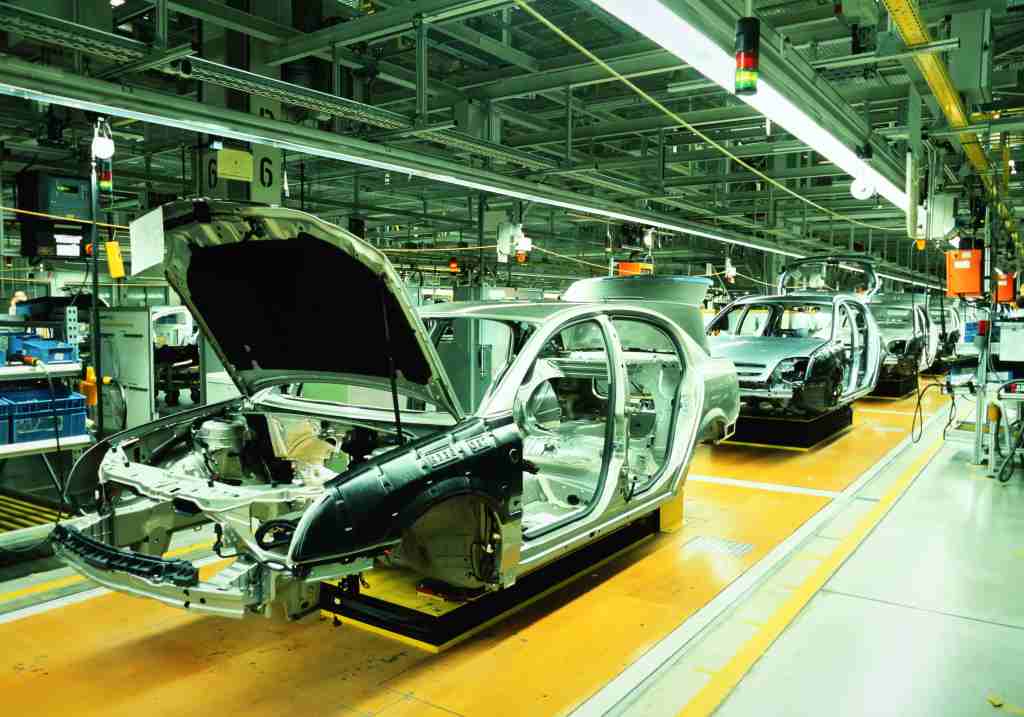Lean manufacturing is a production method in business that’s designed to reduce waste and maximise efficiency.
Lean manufacturing was pioneered by Toyota and is also known as just in time manufacturing.
While it helped to revolutionise manufacturing primarily, the methodology can be applied to all kinds of project management.
Businesses in industries from hospitality to computing have all benefited from lean techniques. What can you implement in your business?
Lean manufacturing meaning
The lean manufacturing meaning is a production method that aims to maximise value for the customer with the least amount of waste.
The method emerged in the 20th century as manufacturers began to realise the need to find efficiencies in their processes.
Toyota fine-tuned lean manufacturing by developing the Toyota Production System, which also takes its overall management approach into account. The term ‘lean’ emerged in the 1990s as the method was popularised in the West.
Just in time manufacturing and lean manufacturing are often used interchangeably. Lean manufacturing is a more generic term that can be applied to all sorts of businesses and processes.
It includes key principles like continuous improvement (kaizen), defining customer value, and eliminating waste.
So, lean manufacturing is…
- people-focused – anything that doesn’t create value for the customer is waste, so employees are encouraged to have a customer-focused mindset – and employees themselves are given the opportunity to learn and develop
- long-term – it took many years for Toyota to fine-tune the Toyota Production System, so lean manufacturing is a long-term philosophy rather than a process designed to meet short-term goals
- continuously improving – instead of repeating the same mistakes, lean manufacturing is about discussing and solving problems, prioritising learning that helps the business grow and become more efficient

What are lean manufacturing principles?
Businesses that understand the core principles of lean manufacturing, rather than simply putting certain elements of the process into practice, will reap the most benefits.
Value and value-stream mapping
Many businesses have failed by creating products and services that no-one actually wants. Identifying value involves identifying what the customer needs, whether it’s a product or a solution to pain-points.
Value-stream mapping then means analysing the process that creates that value. By doing so, you can eliminate waste in the process and become more efficient.
At the simplest level, a value-stream consists of work in, work-in-progress, and work out. Mapping exactly what’s needed at each stage, from raw materials to people, then helps you look for inefficiencies. The idea is to use only what you need to deliver value to the customer.
Pull (flow) manufacturing
Just in time manufacturing is a ‘pull’ system in which processes are only started when there’s customer demand for them.
In manufacturing, this means that parts are ordered in the exact quantities needed and only when they’re needed.
Parts go through each production sequence at the right time, achieving flow through the processes. This saves warehouse space and improves efficiency.
Continuous improvement
Kaizen is a Japanese word that means continuous improvement. In manufacturing, kaizen involves always striving for high-quality products, seeking to eliminate waste, and improving efficiency.
While processes usually develop to help standardise work and increase efficiency, it doesn’t mean that one will always be the best way of working. By practising kaizen, employees can spot problems in these processes and suggest ways to improve.
Kaizen is very people-centric, because it empowers individual employees to suggest improvements. Once improvements are made, it becomes every employee’s responsibility to adopt the new process.
Measurement and visualisation
It’s hardly worth improving efficiency if you can’t measure the results. You’ll want to see if changes are having any effect, or if they’re making things worse.
Lean manufacturing metrics include:
- total cost – reducing waste should lead to reduced costs, as productivity improves and products are made only when there’s customer demand
- cycle time – this is the time it takes to work on a specific item or task, and the time it takes to move into the next part of the process (lean manufacturing should reduce the time it takes for work to move throughout the production sequence)
- on time delivery – improving cycle time should improve the time it takes for an order to be delivered – a lean manufacturer can use the number of products made on time as a metric
- quality – lean manufacturing should improve quality, as problems and defects are raised at each stage of the process – a worker inspects parts carefully and sends them back if they’re faulty
7 wastes of lean manufacturing explained
Taiichi Ohno was an engineer and manager at Toyota and is known as the father of the Toyota Production System. He identified seven wastes of lean manufacturing:
Transportation
It’s not efficient when goods, materials and even employees are moved unnecessarily. It costs time and money and doesn’t add value for the customer. It can hinder quality if defects are caused during transportation. So, work out how to keep transportation to a minimum.
Inventory
Holding too much stock reduces available space and costs money in terms of depreciation (the decrease in value of stock over time). With just in time manufacturing, materials are only ordered when there’s customer demand.
Unnecessary motion
If employees and equipment move about on the factory floor, production time increases. And worse, there’s more potential for accidents and injuries. Lean manufacturing methods optimise the time that people and machinery spend moving around the workplace.
Waiting
This is time spent waiting for the next part of the process to happen – for example, an employee waiting for equipment to be fixed, or for executives to sign off on a document. This is wasted time that could be spent on increasing customer value.
Overproduction
Overproduction leads to other wastes listed here. Excess product needs to be transported and stored somewhere, then you need to wait before you can sell it. Ultimately overproduction is wasteful because it exceeds customer demand.
Overprocessing
If you find yourself adding features or elements that the customer doesn’t actually want, you’re overprocessing. This is wasteful, because you’re adding value that the customer doesn’t need. It costs time and money and also leads to other wastes.
Defects
Faulty products cost time and money to fix – or worse, they become unusable. Lean manufacturing has a focus on quality, so defects need to be caught early. By focusing on quality, you increase customer satisfaction and your business’s reputation.
Example of lean manufacturing
There are many examples of lean manufacturing. As the methodology forms part of an overall philosophy for many large businesses, there’s lots of great online resources that you can learn from too.
- Toyota Production System – Toyota’s UK blog explains more about the 12 pillars of their approach
- Nike ‘Make Today Better’ – in the 2010s Nike adopted a lean approach, with a slogan that encapsulates its spirit of continuous improvement
- Intel ‘Just Say Yes’ – in the 2000s Intel started using lean practises to improve customer relations, with cycle times dropping by 62 per cent between 2006 and 2009
Books about lean manufacturing
The Toyota Way by Jeffrey K. Liker
The Machine That Changed the World by Daniel Roos, Daniel T. Jones, and James P. Womack (see also Lean Thinking and Lean Solutions by the same authors)
The Lean Startup by Eric Ries
How to Implement Lean Manufacturing by Lonnie Wilson
More small business guides and resources
- What is outsourcing? A guide for small business owners
- What types of small business grants are available in the UK?
- How to write a business proposal
- SME Insights Report: data on business confidence and optimism
- What is the continuous improvement process?
Are you implementing lean techniques in your business? Let us know in the comments below.
Ready to buy manufacturing insurance?
As one of the UK’s biggest business insurance providers, we specialise in public liability insurance and protect more trades than anybody else. Why not take a look at manufacturing insurance and start your quote?
